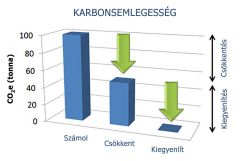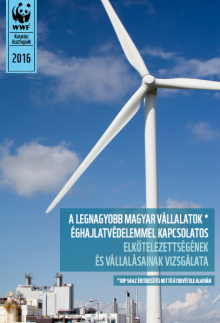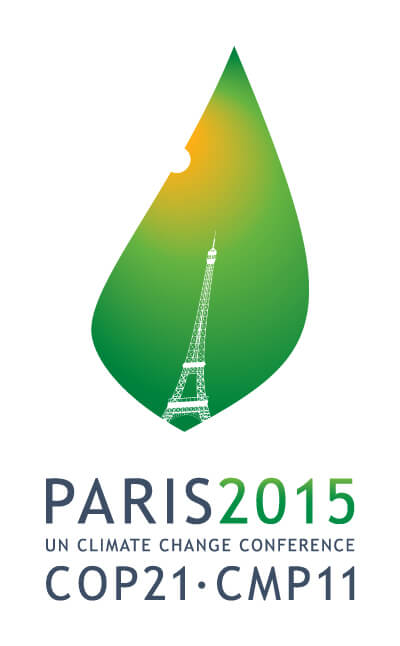 The carbon neutral, moreover, zero ecological footprint Hungary is scientifically possible by the BOCS Foundation’s QFPS™ humanitarian climate protection.
The carbon neutral, moreover, zero ecological footprint Hungary is scientifically possible by the BOCS Foundation’s QFPS™ humanitarian climate protection.
The BOCS Foundation developed its Quality Family Planning Standard (QFPS™) in 2017. Based on this climate innovation, Hungary could reach carbon neutrality, moreover, net zero ecological footprint in one year, even exclusively by the most efficient humanitarian act: by supporting family planning globally. The EU could reach the same in 14 years, while the OECD countries could do so in 37 years.[1] Of course, the EU and the OECD countries could reach carbon neutrality sooner, because besides helping to prevent the unintended pregnancies worldwide (and therefore prevent a lifetime of greenhouse gas (GHG) emissions), they could lower their emissions in other ways, too.
The QFPCTM carbon credits based on the QFPSTM standard are social carbon credits. This means that the prevention of unintended pregnancies has a number of other beneficial social effects beyond avoiding GHG emissions. It helps the realization of all Sustainable Development Goals (SDGs). Securing the human right of contraception (UN, 1968), the knowledge pertaining to it, and the tools to the general public greatly improves the chances of solving the global crisis.
“After being silent on the topic of family planning for more than twenty-five years, the Intergovernmental Panel on Climate Change (IPCC) included access to reproductive health services in its 2014 synthesis report and pointed to population growth as an important factor in greenhouse gas concentrations. Growing evidence suggests that family planning has the additional benefit of building resilience…”[2] According to the Drawdown study, the most efficient climate action of the top 100 ones[2] is helping the 270 million women who currently lack access to contraceptives.[3] It’s not only key in the mitigation of climate change, but also in terms of climatte adaptation. The British government site recently published an economic study which states: “Family planning programmes … offer an easy and effective route for governments to empower women, and yet they remain low on the development agenda. It is a paradox.” [4]
The policy significance of our research is channelling a seemingly distant area of foreign policy, international development, into climate protection. Moreover, helping those lacking access to means of contraception, and preventing unintended pregnancies is beneficial for all countries, so debates about emission reduction could be avoided in this field. As „lowest-hanging fruits”, this opportunity is limited, and the quickest countries and companies can offset their emissions in such a cost-effective way. The ever more accurate calculation of GHG emission reductions via family planning is of great importance. The QFPS™ quantifies the prevention with innovative methodology, based on databases, and scientific studies.
Sources:
[1] QFPS™ estimation (Estimation only, because this standard validates year by year according to recent data, turning former estimates into facts.)
[2] Paul Hawken. Drawdown: The Most Comprehensive Plan Ever Proposed to Reverse Global Warming. New York, New York: Penguin Books, 2017.
[3] https://www.who.int/news-room/fact-sheets/detail/family-planning-contraception
[4] https://assets.publishing.service.gov.uk/government/uploads/system/uploads/attachment_data/file/962785/The_Economics_of_Biodiversity_The_Dasgupta_Review_Full_Report.pdf (p. 246)
What is Official Development Assistance (ODA) and in it, promoting family planning (FP)?
According to the UN, the OECD countries (Hungary is a member since 1996) should aid the developing countries by the 0.7% of its GNI.[5] Hungary has spent 77,1 billion HUF on this, or 0.21% of its GNI.[6] The OECD countries have together spent 0.31%, or $153.5 billion.[7] Unfortunately, of these sums, only a fraction goes to help those lacking contraception.[8][9]
Even though the money spent on family planning are by far the most cost-effective form of aid in terms of beneficial social effects.[10] Lacking contraception can be reduced by a complex action: providing education, securing means and services, empowerment of girls and women, legal development, etc.
The reports of the United Nations Population Fund show how much money could prevent how many unintended pregnancies, and its consequences: abortions, miscarriages, maternal and infant deaths and unwanted births (and all of their social and ecological costs). In the end, contraception prevents the GHG emissions and environmental impact of an entire lifetime.
Sources:
[5] https://data.oecd.org/oda/net-oda.htm
[6] https://nefe.kormany.hu/download/7/f5/72000/Hungary%20-%20International%20Development%20Cooperation%20Profile.pdf (5.o)
[7] https://hellenicaid.mfa.gr/en/diethnes-plaisio-kai-anaptyxiaki-politiki/oosa-dac/prosorina-stoikheia-tes-kratikes-anaptuxiakes.html
[8] https://www.dsw.org/en/2020/12/a-deep-dive-into-the-donors-delivering-for-srhr-report/
[9] euromapping
[10] https://www.copenhagenconsensus.com/post-2015-consensus/economist
How could Hungary become carbon neutral in the most cost-effective way?
From an ecological standpoint, Hungary is among the best,[11] but of course, it needs to further reduce its ecollogical footprint, including its carbon footprint. But the true big step is nullifying the remaining ecological footprint by carbon offset! According to the estimations of QFPSTM, for this, it would be enough for Hungary to give a mere 0.1% more of its GNI for ODA, specifically for preventing unintended pregnancies. Moreover, this way, the country can become a pack leader among the new members of EU with 0.31%, approaching the EU average. Doing this for 10 years, it would become fully carbon neutral, and would remain carbon neutral for free for the life expectancy of the average person, up until 2090.
We are talking about estimates, because one cannot offset emissions with promises (e.g. with newly planted trees), only with the certified credits from the evaluation of finished projects (e.g. mature forest). From year to year, preventing unintended pregnancies in the past would create newer credits, based on the average carbon footprint of a non-OECD citizen, and other factors.
This half a billion HUF per year needs to be spent on 3 million unintended pregnancies, cooperating with the UNFPA and other organizations, and in Hungarian ODA projects specializing in this. Such pojects are underway in Africa, and evaluating these by the QFPSTM can already result in carbon credits. „There are such projects which try to counter overpopulation: women to get carreer opportunities and a profession, and become capable of thoughtful family planning” (Azbej Tristan, the Hungarian Secretary of State responsible for heling the persecuted Christians and realizing tha Hungary Helps Program).[12]
Sources:
[11] https://bocs.eu/a-wwf-vakon-hibaztatja-a-magyarokat-frissitett-verzio/
[12] https://pestisracok.hu/a-hungary-helps-program-klimavaltozas-elleni-harcot-is-tamogatja/
What is carbon offset?
Carbon neutrality cannot be reached without carbon offset, i.e. using carbon credits, because there will always remain some GHG emissions that cannot be eliminated (if nothing else, then the breathing of humans and livestock). A carbon unit is to be created when 1 tonnes of GHG emission was prevented or sequestered from the atmosphere. This is post-financed by the one who uses the carbon credit, which was created by using up the carbon unit, for carbon offset. This isn’t donation, sponsorship or tender support, which helps future projects, but post-financing the result of a work already done. Carbon credit means the following: with emissions, the polluter will be in debt to the financers of projects that prevent emissions or sequester carbon. This debt is settled by carbon offsets. During carbon offsetting, money from polluters goes to the cleaners, and thus, the economcy becomes greener.
The nonprofit organizations spend such income on climate protection, but those using carbon offsets don’t need to ask what they spend the money on, but what past projects the carbon units were derived from. In registries which are properly administering carbon offsets, this can be seen with all units, and all documentations are accessible.
The usual criticisms that carbon offsets face don’t really apply to QFPCTM carbon units, because these are quite different. Its lifecycle ecological impact is minimal, it doesn’t transfer ecological footprint onto other sectors (moreover, not even hormonal contraceptives increase the hormonal load of living waters, but in practice, they have a net reducing effect [13]). Compared to this, renewable energy capacities have a significant lifecycle ecological footprint.
Moreover, compared to carbon credits based on biological sequestration, QFPCTM can be viewed as final. While carbon sequestered in forests or the soil isn’t forever; these are endangered credits, since forest fires, droughts, pests, erosion, etc. can get it back into the atmosphere.
Helping those lacking contraception is also a humanitarian and human rights duty, and the most important responsibility towards future generations. „Before we could even think about conceiving children, those who are alive should prepare the place for the arrival of these children.” (Gandhi)[14] For responsible conception, the couple has to ponder this question: Would a child really want to be conceived by us, now?[15]
Prevention of unintended pregnancies would also prevent the emission of a lifetime of GHG emissions (and ecological footprint), and it’s also the most efficient form of climate protection, and would also result in carbon units quantifiable by the QFPSTM standard, if this offsett potential isn’t used.
Sources:
[13] https://bocs.eu/a-terhesseg-tizszer-nagyobb-hormonterheles-mint-a-fogamzasgatlo/
[14] https://bocs.eu/oszinte-erkolcsi-felelosseggel/
[15] Simonyi Gyula (szerk): “Igazán szeretne egy gyermek nálunk és most megfoganni?”, BOCS Alapítvány, 2008.
How much is there of this „lowest hanging fruit”
Worldwide, almost half of all pregnancies are unintended by the couple.[16] This ration is also 43% in Europe,[17] but ODA is directed towards non-OECD countries, so we can calculate with the average ecological and carbon footprint and life expectancy of non-OECD countries. Every year, tens of millions of unintended pregnancies can be prevented by the promotionof contraception (and thus, tens of millions of abortions and miscarriages, which are part of humanitarian results).[18] More accurate data is being calculated from year to year by QFPSTM using a lot of variables, databases and scientific results.
The potential of QFPSTM carbon offset definitely needs to be used first, as it is immediate and low cost means of preventing GHG emission (moreover, full ecological footprint). In comparison, those emission prevention methods widely discussed (e.g. forests, renewables, cleaner tech, etc.) are usually expensive, slow, and have significant lifecycle ecological footprint. These are left for those countries and companies who can’t get the QFPCTM, which amounts to a quarter billion tonnes per year.
Although one year of preventing a hundred million unintended pregnancies wouldn’t even prevent one percent of the emissions of humanity in the first year, but with a single investment, it will bring credits for free over a lifetime. Forest protection and plantation is like that as well, but QFPCTM isn’t an endangered credit, and doesn’t require land (which is unfortunately a scarce resource on Earth). Renewable energy capacities also produce carbon credits with a single investment, but its lifetime is shorter, its maintenance and its retirement are costly. By switching over to electric driving, avoiding 1 tonne of emissions is cca. thousand (!) times more expensive than by promoting contraception.[2]
Presuming that in about 10 years, unintended pregnancies avoidable by securing access to education and contraception opportunities disappear on the Earth, and that carbon footprints reach zero by 2050 according to promises, about one year worth of global emissions in QFPCTM could be created altogether. For this, the world would need to do its basic humanitarian duty towards women and girls. If the amount of this GHG emission doesn’t seem much, then let’s consider that this also means the prevention of total ecological footprint. Moreover, let’s consider what ecological healing it could come from the end of unintended pregnancies, from the global population growth turning into a decrease, and the with a dramatic improvement in the mental and physical health of society…
Sources:
[16] https://www.ncbi.nlm.nih.gov/pmc/articles/PMC6055480/
[17] https://europepmc.org/article/MED/33879531
[18] https://www.guttmacher.org/sites/default/files/report_pdf/abortion-worldwide.pdf (p. 53)
Full study: BOCS Foundation















